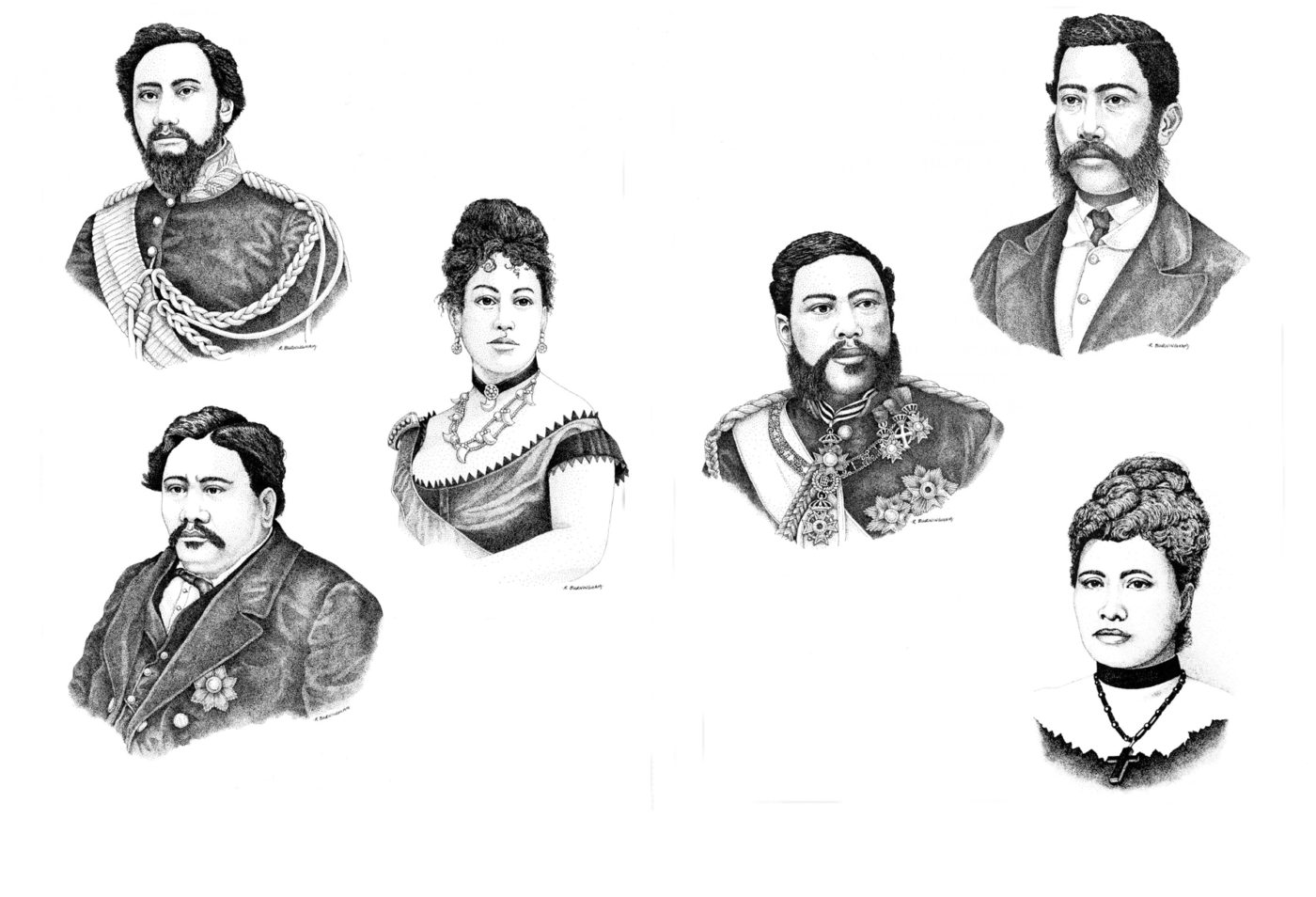In 1839, Kauikeaouli (Kamehameha III) established the Chiefs’ Children’s School in Honolulu, to educate Hawai‘i’s future leaders. Amos and Juliette Montague Cooke, teachers from the Eighth Company of 1837, were appointed to oversee this experimental endeavor, for which they were paid $500 a year.
A School for Ali‘i
- A new adobe schoolhouse was built on the grounds of today’s State Capitol. The school, which opened on April 15, 1840, would educate 16 girls and boys from high-ranking ali‘i families, including these five monarchs:
- Alexander Liholiho (King Kamehameha IV) and his future wife, Emma Rooke (Queen Emma);
- Lot Kapuāiwa (King Kamehameha V);
- William Lunalilo;
- David Kalākaua; and
- Lydia Kamaka‘eha (Queen Lili‘uokalani)
- Princesses Bernice Pauahi and Victoria Kamāmalu, who became Kuhina Nui with King Kamehameha IV, were also students.
- Gathering these students in a single school offered a shared experience of governance principles and values.
— Lydia Kamaka‘eha (Queen Lili‘uokalani) recalling being carried to the Chiefs’ Children’s School at age four by her attendant
Life at School
- Classes were conducted in English, so the children struggled to learn a foreign language while enduring first-time separations from their families. The pupils studied English, reading, spelling, arithmetic, geography, history, drawing, writing and Christianity.
- John Papa Ī‘ī served as kahu, or vice-principal, while his wife Sarai helped care for the students, who ranged in age from two to 12 years.
- Outside class, students enjoyed horseback rides to Nu‘uanu and eagerly took up music.
— Juliette Cooke, writing of a tranquil afternoon in their parlor
A School’s Legacy
- In 1846, the institution was renamed The Royal School. Several years later, a second school was built on Queen Emma Street, and opened to the public a year later.
- After most of their students graduated, Mr. Cooke resigned from the school to co-found Castle & Cooke, Inc., a prominent Hawai‘i business. Mrs. Cooke enjoyed a lifelong friendship with Bernice Pauahi Bishop. On the Punahou campus, Montague Hall is named after Mrs. Cooke and her daughter, both of whom loved music. Pauahi Hall was built by Charles Reed Bishop in honor of his wife. These two buildings stand next to one another, illuminating the women’s lifelong bond and their shared passion for education.
- Bernice Pauahi Bishop established The Kamehameha Schools to educate children of Hawaiian descent. Lunalilo Home (founded by King William Lunalilo) and the Lili‘uokalani Trust (Queen Lili‘uokalani) serve Hawaiian seniors and orphans, respectively, while Queen’s Hospital (established by King Kamehameha IV and Queen Emma) strives to improve the health of Hawai‘i’s broader community.
In 1840, Kauikeaouli determined to formalize education for all, building on the network of schools developed through the mission with ali‘i support, and taught by missionaries and Hawaiians, mainly graduates of Lahainaluna. “The basis on which the kingdom rests is wisdom and knowledge. Peace and tranquillity cannot well prevail in the land, unless the people are taught in letters, and that which constitutes prosperity.”21 Until 1860, public education was under the leadership, in turn, of David Malo, Rev. Richards and Rev. Armstrong, and the language of instruction was Hawaiian.
20 Lili‘uokalani, Hawai‘i’s Story by Hawai‘i’s Queen, Hui Hānai Press, Honolulu, 2013, p. 12.
21 Translation of the Constitution and Laws of the Hawaiian Islands, established in the reign of Kamehameha III, Lahainaluna, 1842, p. 61.



